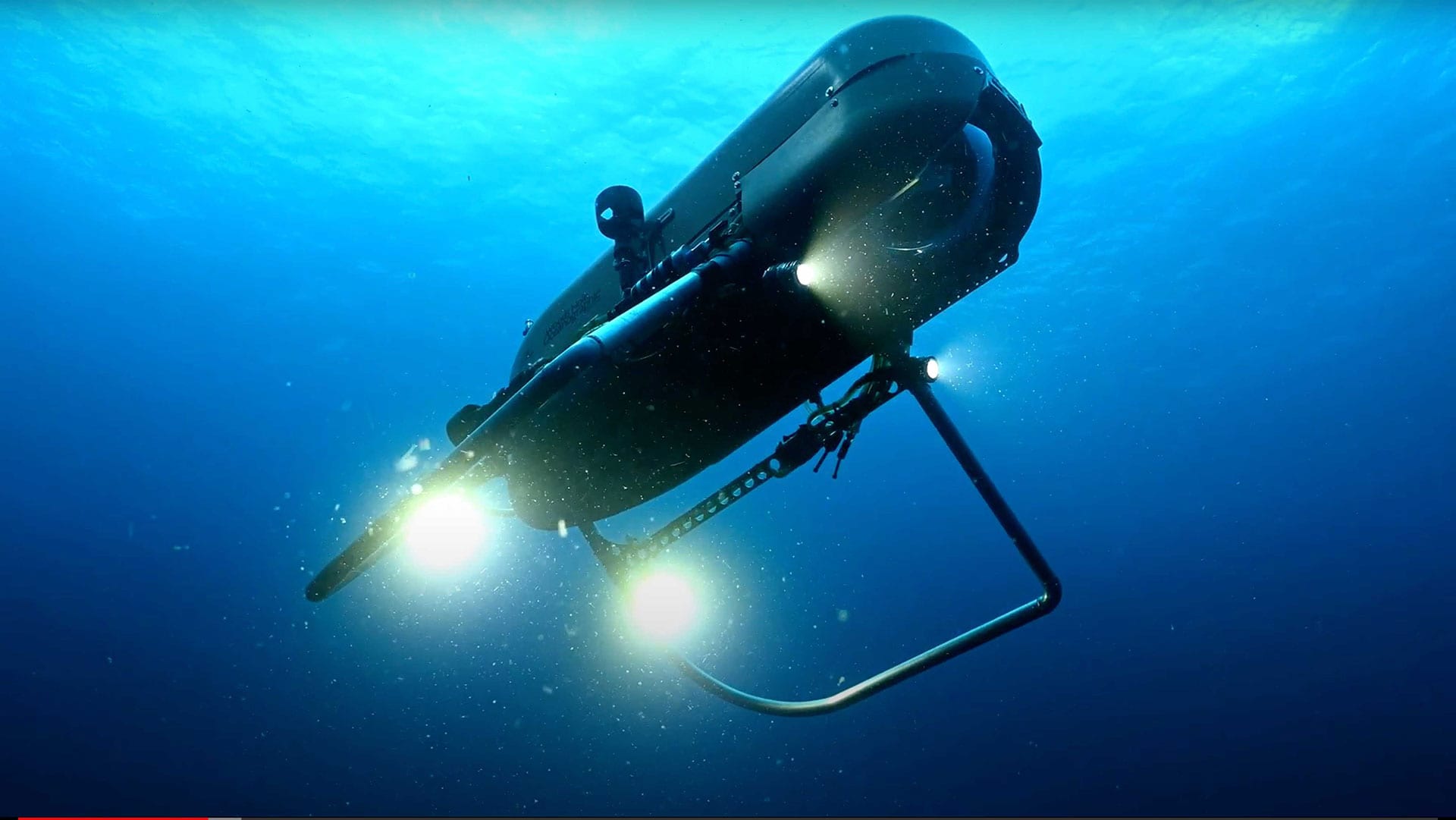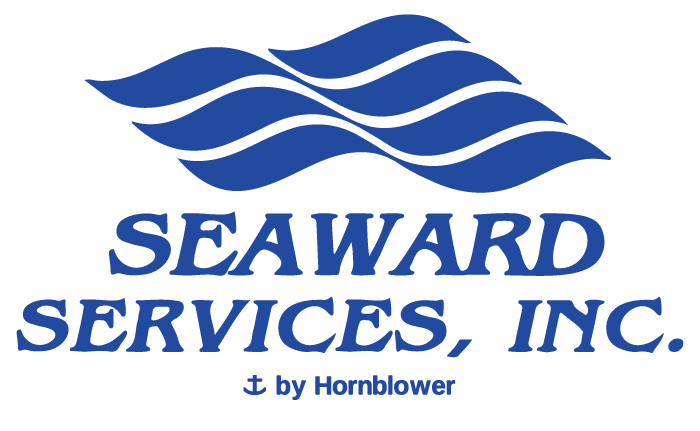
A Conversation with Orpheus Ocean’s Co-Founder & CEO, Dr. Jake Russell and Seaward Services’ Morgan Loehr
Q: Can you tell us a little about your background and how you came into the ocean technology space?
Jake Russell: I grew up in Tennessee, so I had almost no exposure to the ocean, except for my dad building a sailboat in our backyard. It wasn’t until 2021, when I joined the Department of Energy’s ARPA-E as a fellow, that I really encountered ocean technology for the first time.
At ARPA-E, my job was to identify new “white spaces” for climate and energy innovation. I started out looking at maritime decarbonization, since shipping is a huge but often overlooked emitter. From there, my work expanded into other ocean-related areas like offshore wind, seaweed cultivation, marine carbon removal, and even deep-sea minerals.
Over the course of two years, I really became what I’d call an “ocean technology evangelist.” I came to see just how much untapped potential the ocean holds.
That perspective led me to co-found Orpheus Ocean. I brought the climate and market insights, and my co-founder Casey brought nearly two decades of engineering experience from the Woods Hole Oceanographic Institution. Casey is probably one of the world’s leading experts in building robotic systems that can survive at 6,000 meters or deeper. Together, we launched Orpheus Ocean last November.
Q: Can you tell us a bit about the Orpheus AUV and some of its key features?
Jake Russell: Orpheus is an autonomous underwater vehicle designed for ultra-deep ocean access up to 6,000 meters. The vehicle design we’re building from actually originated at Woods Hole back in 2019, but Orpheus Ocean is the commercial spinout and our effort to scale this technology for the market.
From a technical standpoint, a few things stand out. First, Orpheus is capable of operating at extreme depths. We’ve already tested to 5,700 meters, which is significantly deeper than most ocean assets are capable of. Second, Orpheus can physically interact with the seafloor. It can land, collect sediment cores, sample environmental DNA, and run high-resolution video surveys, which means that it’s not just a survey tool, but can actually touch and study the environment.
A large focus for us is also scalability. Orpheus is low-cost and manufacturable, which means you can build fleets instead of relying on one-off prototypes. The shipside infrastructure requirements are minimal. All you need is about six by six feet of deck space, a crane rated for at least 550 pounds, and a laptop, which reduces the need for a massive crew and expensive transportation costs.
Another vehicle capability is extended loitering. The vehicle can sit on the seafloor in a low-power mode for days or even weeks, essentially acting like a mobile lander. And because of that, we can deploy vehicles and leave them in place while the ship goes away to do other work. That flexibility is a big operational advantage.
Q: What are the main differentiators between your AUV and others on the market?
The real differentiation in the market comes down to the kind of data we’re collecting. Traditional AUVs are often focused on bathymetry — essentially physical mapping. Orpheus is designed to go further, into what I call “levels two through four” data: chemical composition, biological makeup, geological analysis. That’s the kind of work that usually requires a full ROV or other tethered systems, which can be extremely expensive, slow, and infrastructure-heavy.
Q: What are some of the current applications for the Orpheus AUV?
Jake Russell: Right now, a lot of our work is about supplementing existing ocean operations. For example, we can support ROV missions by acting as reconnaissance. If a ship is sending down an expensive ROV, Orpheus can survey the site the night before and help pinpoint the most interesting areas to dive. We can also access places that many other assets simply can’t reach, like depths beyond 4,000 meters. In that way, we improve efficiency by allowing a research vessel to deploy Orpheus to the seafloor while the ship itself continues with mapping or other tasks elsewhere.
On the commercial side, Orpheus is already being used for high-resolution video surveys in deep areas of the ocean that have never been imaged before. We’re also collecting environmental data, like sediment cores, which give us insights into chemical and biological activity in these remote regions.
Q: You’ve mentioned scalability as a key feature. What benefits and possibilities does that offer?
Jake Russell: Scalability is really at the heart of what makes Orpheus different. Traditional ROVs are tethered, so you can only operate one vehicle at a time in one place. With Orpheus, the idea is to break that limitation and deploy fleets of multiple vehicles that all work simultaneously across vast areas of the ocean.
The vision is that you’d launch these fleets from a single surface vessel, and eventually even from autonomous surface vessels. Each AUV can loiter on the seafloor for days or weeks, so the ship can drop them off hundreds of kilometers apart and then return later for recovery. That allows you to cover huge areas at a resolution that simply isn’t possible with existing technology.
We’ve designed everything with that fleet model in mind. The vehicles are low-cost and manufacturable, so building them in numbers is realistic. Plus, you don’t need a big crew; a small team can manage multiple vehicles at once.
Q: The ability of the AUV to loiter on the seafloor for extended periods is interesting. What applications does that have?
Jake Russell: Loitering is one of Orpheus’s most unique and powerful features. We can put the vehicle into a low-power mode where it can stay on the seafloor not just for hours, but for days or even weeks at a time. That creates a whole range of possibilities that just haven’t been practical before.
From a mission standpoint, it means we can do long-duration environmental monitoring. If you’re developing seabed minerals, for instance, you need sustained data collection to really understand the impacts. We can establish environmental baselines over extended periods instead of just taking snapshots during short missions.
There are clear defense and security applications as well. You can deploy vehicles across a region as a surveillance network and have them monitor subsea cables or other critical infrastructure. If one detects an anomaly, it can investigate and send back a report. That kind of autonomous, persistent presence is a real game-changer.
So I’d say loitering doesn’t just extend mission time; it fundamentally changes the economics and the scope of what’s possible in deep-ocean research and monitoring.
Q: Your entry point into all of this was through ARPA-E and exploring climate and energy applications. How does Orpheus tie into that and what are its potential climate benefits?
Jake Russell: I’d say Orpheus Ocean is climate-adjacent rather than a direct decarbonization company. Our vehicles are really an enabling technology that supports a range of climate-positive industries.
Looking forward, I see a lot of climate potential in long-duration environmental monitoring or seafloor surveying. Orpheus provides data that supports sustainable resource and infrastructure development. We can also help monitor subsea cables and renewable energy assets, which are increasingly important as the energy transition accelerates. And when it comes to seabed minerals, we can enable the kind of large-scale environmental studies that are necessary to develop that industry responsibly.
Ultimately, Orpheus is a flexible platform technology. We can adapt to different industry needs, whether that’s offshore wind in Europe or emerging mineral extraction technologies.
Q: What are the government applications for Orpheus?
Jake Russell: The government has really played an important role from the start. NOAA Ocean Exploration funded some of the early design work at Woods Hole because they saw the need for scalable, depth-rated capabilities in ocean science. Then the Ocean Exploration Cooperative Institute paid for our first commercial mission near Guam, which was a big milestone for us. So from the beginning, there’s been a lot of excitement around taking this kind of academic technology and actually transitioning it into a commercial startup.
On the defense side, there are several clear applications. One is subsea infrastructure protection like monitoring undersea cables, especially in vulnerable regions such as the North Sea. The ability to deploy a network of vehicles that can loiter for weeks, detect anomalies, and even mobilize to investigate makes Orpheus a very effective tool for that. It ties directly into national security priorities, from safeguarding communications infrastructure to ensuring naval preparedness and technological superiority.
Q: What were the key challenges Orpheus Ocean faced during the initial prototype deployment, and how are you addressing them in the development of the first commercial product?
Jake Russell: When we took our prototype down to 5,700 meters near Guam, the good news was that the vehicle itself survived just fine. That’s really a testament to my co-founder Casey’s two decades of deep-sea engineering experience at Woods Hole.
The bigger challenge was on the autonomy side. Once we deploy Orpheus, it’s completely untethered and autonomous, so there’s no real-time control at this point. Missions can last 8 to 12 hours, and during that time we had limited visibility into what was happening. We could track the location acoustically, but we didn’t know how the onboard systems were performing or what the data quality looked like until we recovered the vehicle.
Those lessons have really shaped our upcoming commercial product, which we’re rolling out this fall. I can’t go into all the details yet, but I can say we’ve focused on making the autonomy systems much more robust and improving overall mission reliability. Everything we learned in Guam has been baked into the next version.
Q: What does the future hold for Orpheus?
Jake Russell: Looking ahead, the big opportunity is scaling up to fleet operations. As the technology evolves, we’re not stopping at a single AUV. The vision is to scale up to large fleet deployments of 20 or more vehicles operating simultaneously across vast areas of the ocean. That fundamentally changes the economics of deep-ocean research.
We also see a future where a lot of the dangerous work at sea shifts to shore. Instead of people spending weeks offshore, they’ll be sitting in command centers on land, managing fleets of autonomous vehicles. And because Orpheus is designed to be transportable and low-cost, we’ll be able to support customers globally.
There’s a future where robots handle the dangerous deep-ocean work, people operate safely from shore, and the vast unexplored ocean finally becomes accessible. Our role is to be the enabling technology that unlocks that possibility.
Q: And, one final question for you, if you could ride your AUV anywhere on the seafloor, where would it be?
Jake Russell: I did think about this one. I’d love to see the newly discovered subsea ecosystem up in Alaska, in some of the deep trenches there. Just a couple of weeks ago, there was a report that scientists had found the deepest known ecosystem ever — at about 7,000 meters. It’s this community of clams and worms living on hydrogen sulfide and methane, thriving in a completely chemosynthetic system.
To me, that’s just crazy and amazing; that in 2025 we’re still discovering entirely new ecosystems on Earth. And honestly, I think the deep ocean is one of the only places left where that’s happening. So yeah, I’d definitely want to go there… and maybe even discover a new one.
